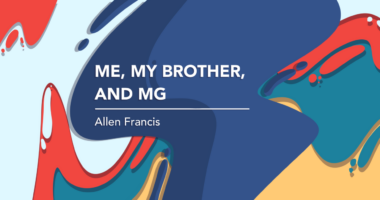Bladder Problems Common in MG, Particularly for Late-onset Patients

Bladder problems like urinary incontinence, urgency, and nocturia — waking up frequently to urinate — are common in people with myasthenia gravis (MG), particularly those with late-onset disease, a study found.
Late-onset MG, or LOMG, is defined as disease symptoms that begin after age 50, while symptoms in early-onset MG (EOMG) start at earlier ages.
The study, “The Impact of Myasthenia Gravis on Lower Urinary Tract Functions,” was published in the International Journal of Clinical Practice.
MG is caused by self-reactive antibodies that mistakenly attack proteins involved in nerve-muscle communication, causing patients to experience muscle weakness and tiredness.
In certain neurological disorders, lower urinary tract dysfunction (LUTD) is common and has a considerable impact on quality of life. LUTD can be caused by an overactive bladder, which increases the need and urgency to urinate, and may be accompanied by urinary incontinence or loss of bladder control.
Underactive bladder, another form of LUTD, results in a need to wait for the urine flow to start, a need to strain to urinate, or a feeling of being unable to completely empty the bladder. Although a few case reports have described bladder problems in MG patients, little is known about how MG affects bladder function.
Researchers in Istanbul, Turkey, evaluated the bladder function of 36 patients being treated at their clinic and 29 healthy controls using questionnaires and non-invasive tools, including uroflowmetry (a test that measures urine flow over time) and ultrasound imaging.
MG patients (18 women and 18 men), as well as gender- and age-matched controls (15 women and 14 men) were asked to complete a three-day urinary voiding diary and respond to two surveys.
Patients’ mean age was 54, and their mean disease duration was 54 months or about 4.5 years. Most, 19 or 53%, had LOMG, while 17 (47%) had EOMG.
The overactive bladder symptom score (OABSS) was used to evaluate related symptoms, and the international consultation on incontinence-short form (ICIQ-SF) to assess urinary incontinence. In both tests, higher scores indicated more severe symptoms.
Patients were required to delay taking anticholinesterase inhibitors before the start of the study, since these medications are thought to affect bladder function.
Common LUTD symptoms in the MG patients were nocturia (81%), incontinence (61%), urgency to urinate (47%), a sense of incomplete bladder emptying (25%), and voiding difficulties (8%). These symptoms lasted for a mean of 32 months (about 2.7 years).
Patients were divided into two groups, depending on the age at disease onset and the presence of antibodies targeting the acetylcholine receptor (ACh-Ab), the most common self-reactive antibodies seen in MG.
Urinary symptoms lasted longer in LOMG than in EOMG patients (39 vs. 24 months), and nocturia was statistically more frequent among those with LOMG than EOMG (95% vs. 65%), results showed.
Investigators also found that disease duration and the duration of urinary symptoms were greater in patients who did not have ACh-Ab antibodies.
“We found a longer duration of disease and urinary symptoms in ACh-Ab [negative] patients. One more explanation might be the bladder’s involvement through other antibodies that have not been defined before,” the researchers wrote.
Compared with controls, MG patients had higher OABSS scores. Results also showed that the frequency of night-time urination significantly increased, while daytime voiding volume decreased, in LOMG patients relative to the EOMG group.
Ultrasound imaging revealed that a greater volume of urine remaining in the bladder of LOMG patients after urination relative to EOMG patients.
People with a longer disease duration were also more likely to experience more daytime urination and to need more time to reach a maximum urine flow. A longer disease duration also associated with a lower daytime voiding volume.
“In conclusion, the present study indicates LUT dysfunction in myasthenic patients, particularly in late-onset ones,” the investigators wrote. “Physicians might pay more attention to searching LUTD symptoms as a part of a routine examination of MG patients.”
The team noted that the small number of study participants, all from one medical center, as a study limitation.






